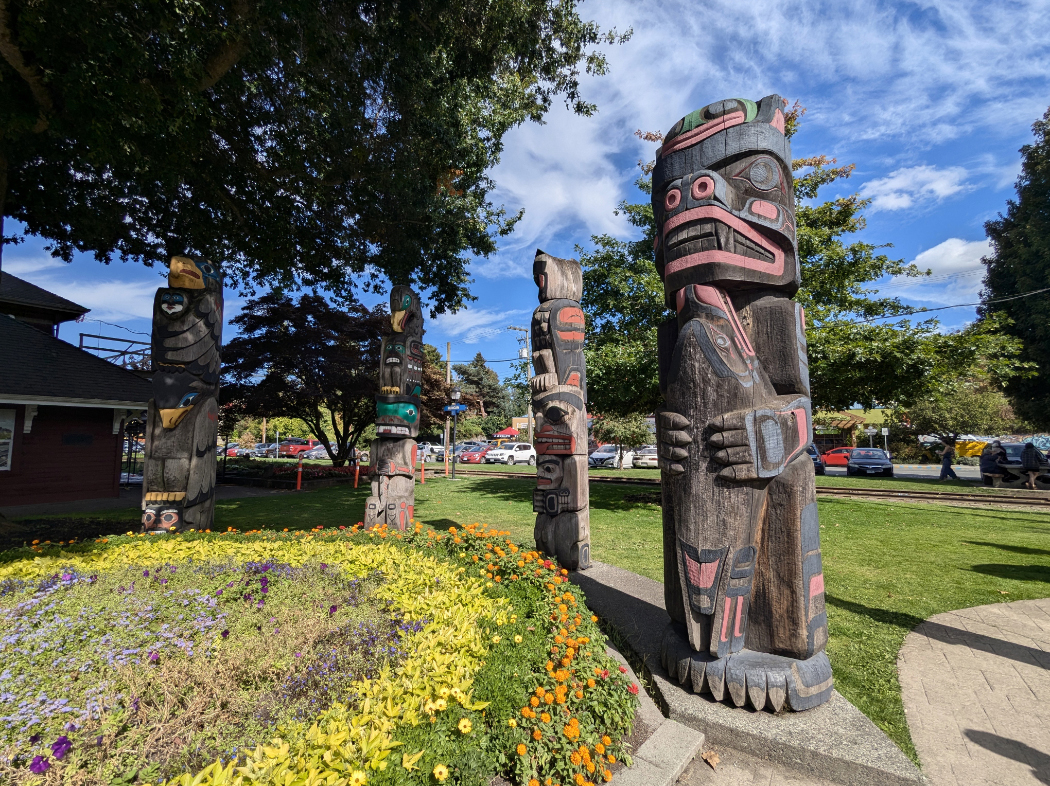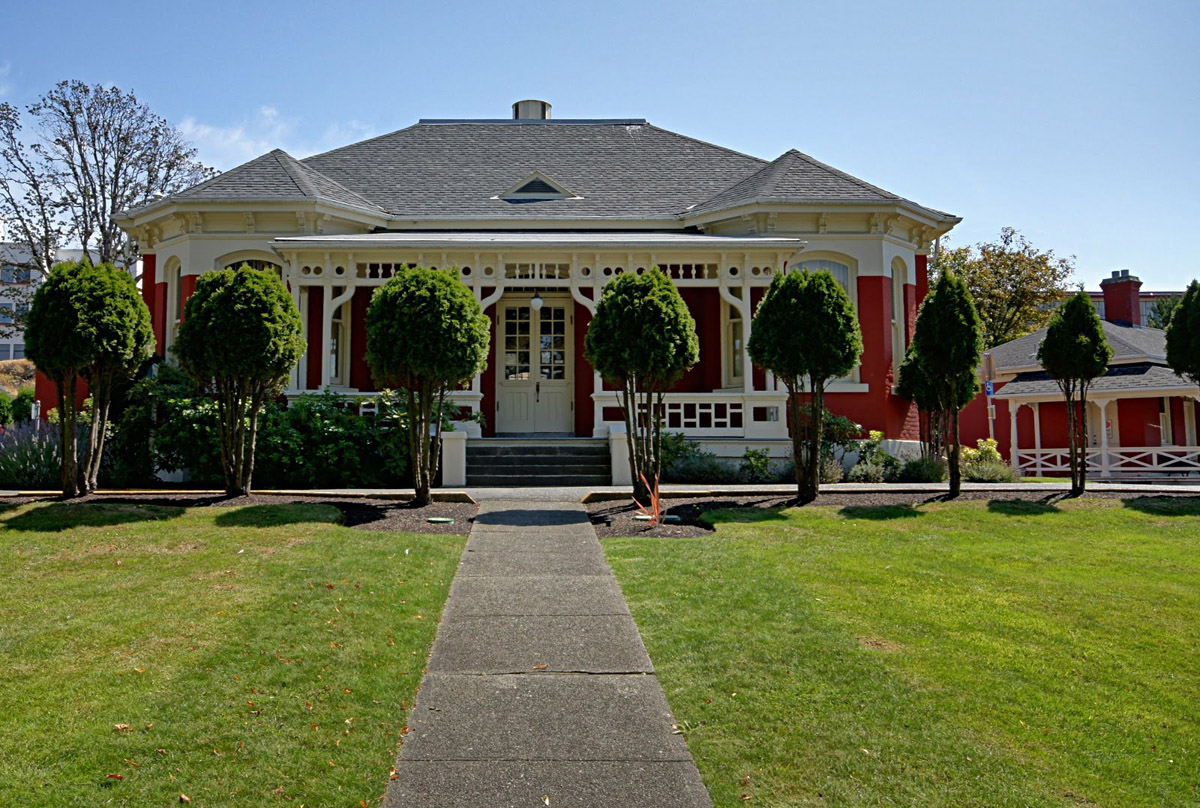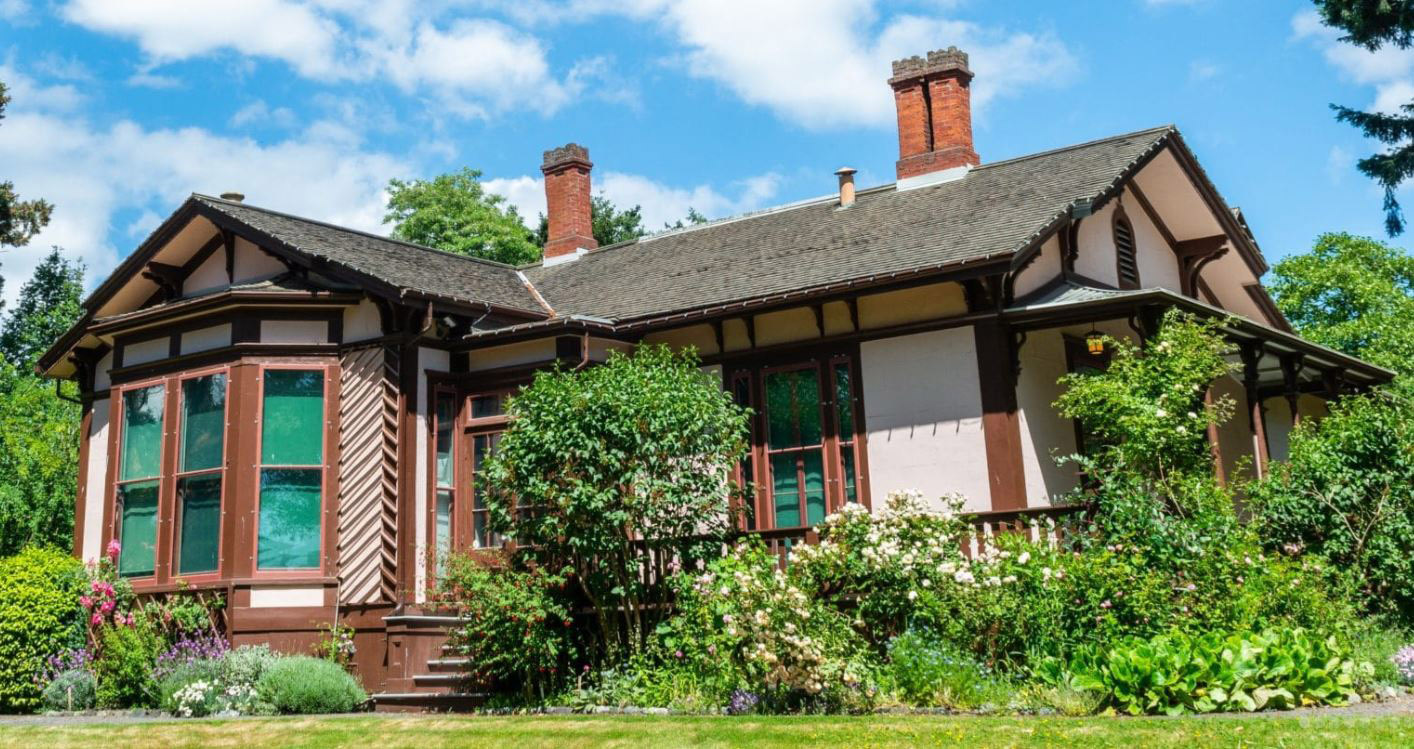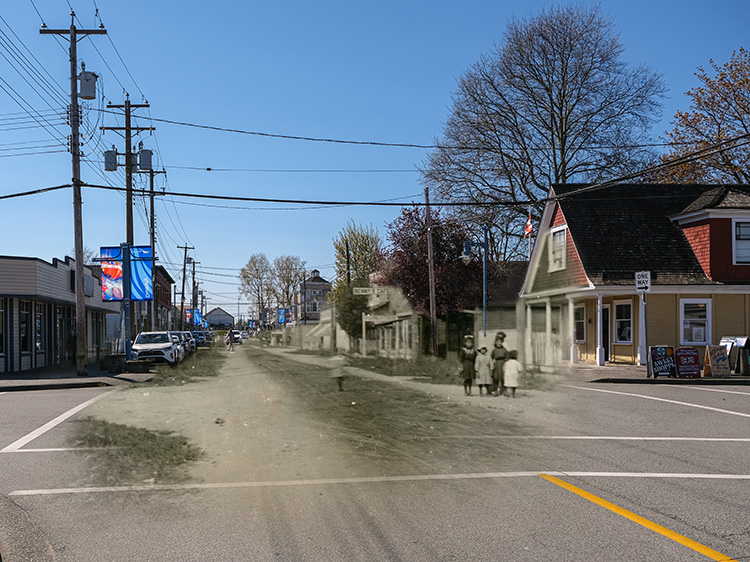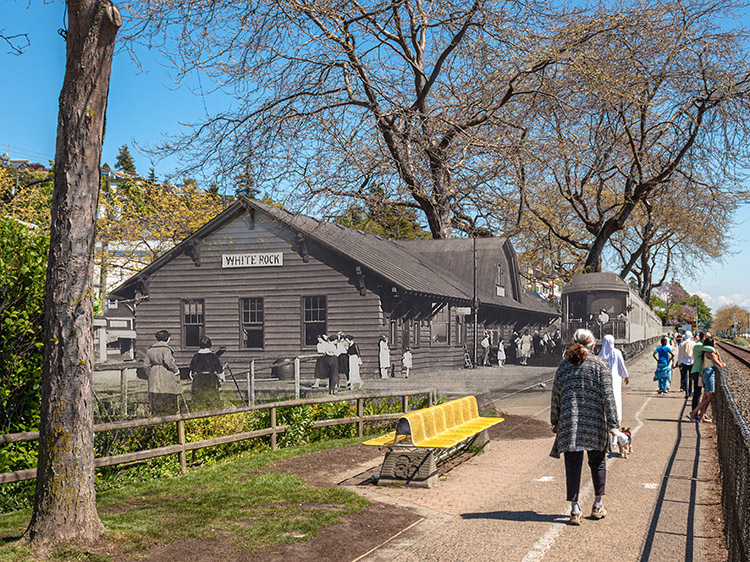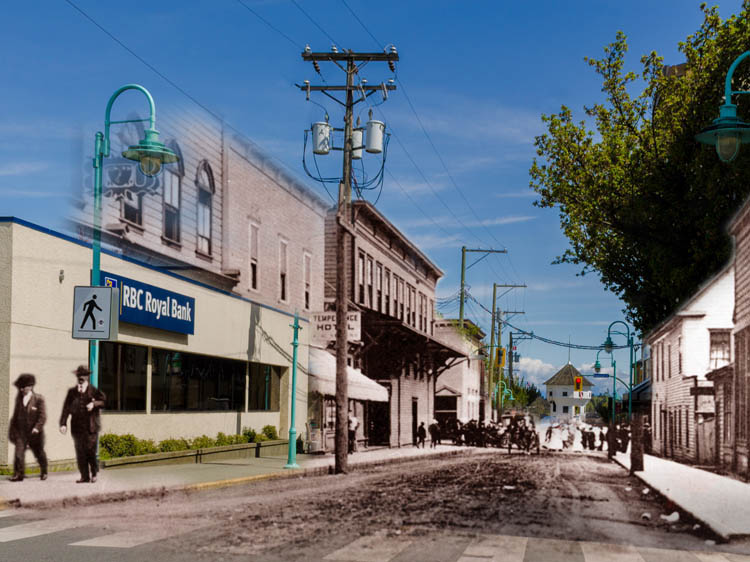Partner City
Esquimalt
Place of Shoaling Waters
The Songhees First Nation lived in picturesque Esquimalt for thousands of years before the arrival of the British, whose Royal Navy was attracted to the peninsula's well-protected harbour. In the mid-nineteenth century they established Britain's chief naval base in the North Pacific here. After British Columbia joined Canada the base was turned over to the Royal Canadian Navy. Today it is the headquarters of Canada's Pacific Navy and boasts many historic buildings from those earlier days. The E&N Railway, which played such an important role in Vancouver Island's history, ran through Esquimalt's as well.
We'd like to thank the Esquimalt Archives for generous use of their historic photo collection.
We respectfully acknowledge that Esquimalt is on the ancestral lands of the Xwsepsum (Esquimalt) and Lkwungen (Songhees) who shared traditional land resources with neighboring families of Scia’new (Beecher Bay), T’Sou-ke (Sooke) Nations, and many others.
Explore
Esquimalt
Then and Now Photos
Songhees Canoes
1900
Canoes have been hauled up in front of the Songhees Village facing Victoria across the Inner Harbour. Much concrete has since been poured over this area, making identifying the precise perspective a little challenging.
Streetcar on Esquimalt Road
1895
A streetcar travels up the hill past Canteen Road towards the naval base. The area has seen dramatic change over the 120 years.
Esquimalt United Church
1916
This photograph was taken a few years after the building and subsequent consecration of the Methodist Esquimalt Naval and Military Church.Methodist church services had previously been held in the Soldiers and Sailors Home, which later became Tudor House Pub. In 1911 he decision was taken to found an independent Methodist Church, and to raise funds for land and building costs. The building only took two years to build. It was designed by American architects Manuel Bresseman and Eugene Durfee, and completed in September 1913. As you can see from the 1916 photograph, the church is a simple structure, designed over two stories, with the capacity to seat three hundred people. The original design included a bell tower, but after years of dealing with pigeon infestations, the congregation voted to have the tower removed during renovations in the 1950s.
The church has always served both military and civilian communities, although in 1925 the congregation took the decision to become part of the United Church of Canada. During the 30s and 40s Protestant servicemen had money deducted from their pay to contribute towards church costs. Army personnel contributed 5 cents, whereas men from the navy men contributed 10.
Snowshoeing
1916
Reverend Hughes sets to work shovelling snow in his snowshoes out front of the United Church.
High School Students
1916
A class photo of smartly dressed students in their second year of high school at Lampson Street School.
Children looking on the Gorge
1921
Two children sit atop the Gorge. Below several swimmers are climbing out of the water with one helping another get onto the dock. Today there's a dock in the same spot.
Class Photo
1926
Boys and girls pose for a class photo in front of Lampson Street School.
Choir Gowns
1925
An unidentified woman poses behind St. Paul's Church in choir gowns.
Crutches
1928
Taken around 1928, this photograph shows the Filewod children standing on the corner of Lampson St. and Craigflower Rd. The house in the background is still standing, although its porch is now obscured by a mature tree. The child on the left, Don Filewod, is using a pair of old-fashioned crutches. If you look closely you can see that he's sporting a poppy on his lapel, which indicates that the photograph was probably taken sometime in late October or early November.
Esquimalt Neighbourhood House
1930
The home of the Stewart Family in 1930. Today the well-preserved home houses the Esquimalt Neighbourhood House and Family Centre.
Lampson Street School
1939
Esquimalt has a long history of education, with Esquimalt property holders coming together and resolving to open British Columbia's first free school in 1863[16]. The original school was down by the water, in what is now land occupied by the Navy. Regardless, it demand swiftly outgrew the first building, and in 1903 a second, four room school was opened at Lampson Street.
This photograph was taken in 1939, after extensive change, expansion, and renovation. The school has been decorated and adorned with Union Jacks, in preparation for a visit from King George VI and Queen Elizabeth.
Lounging in the Park
1940s
A smiling Joyce Gordon sits with two toddlers in Memorial Park. The house in the back still stands.
Naval Uniforms
1941
Uniforms in the navy were a serious business. This photograph, taken during the war in 1941, shows many of the local sailors in their finest get-up. This is what retired sailor, John Scratchley, had to say about the unwritten naval dress code that dominated the end of the first half of the twentieth century, and was adhered to by all tiddly (suave) sailors:
Swimming the Strait
1955
This photograph was taken at dedication of the plaque laid in commemoration of Bert Thomas, the first man to swim the Strait of Juan De Fuca. Thomas stands in the centre of the photograph accompanied by a crowd of friends, professional supporters, and well wishers.
Bert Thomas, from Tacoma, Washington, made the 18.3mile crossing in 11 hours and 10 minutes on July 8, 1955. Having served in the U.S.Marine Corps during World War II, Thomas was prompted to attempt the crossing when he saw world-famous swimmer Florence Chadwick fail to conquer the straight, being pulled from the water after 5 hours and 11 minutes.
The Victoria Daily Times offered $1000 for the first person to swim the strait, and local business owners as well as the Port Angeles Chamber of Commerce contributed a total of $2,500. Through the summer, amateur swimmers turned up daily to see if they could claim the prize.
Thomas attempted the crossing four times from Victoria, but opted to leave from Port Angeles for his fifth attempt. He was accompanied by a support boat and watched by a crowd of thousands. his eleven year-old-daughter who cried encouragement.










































